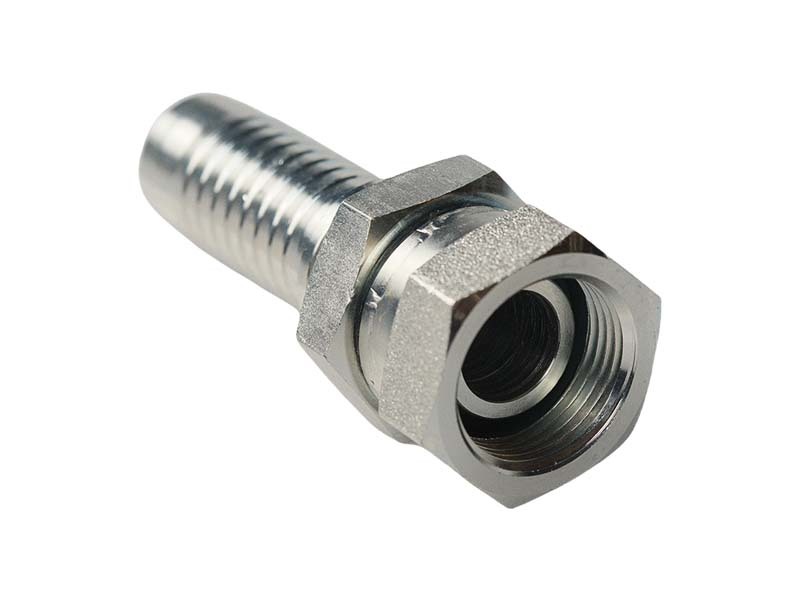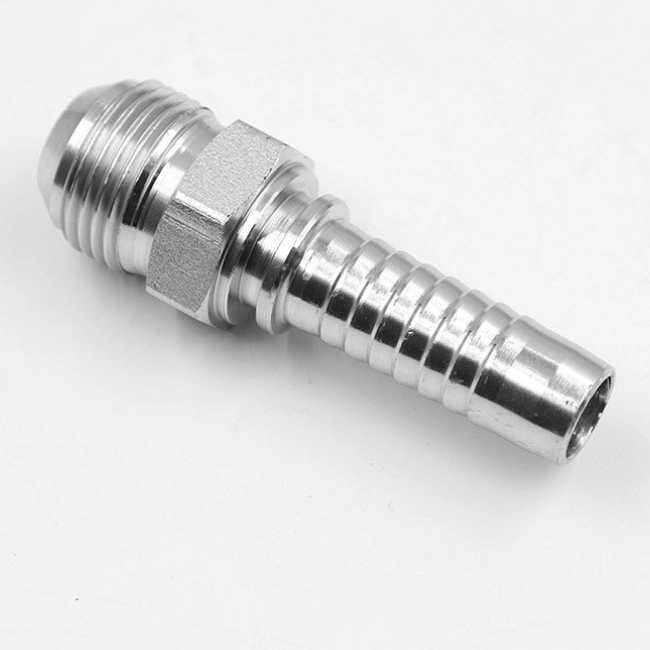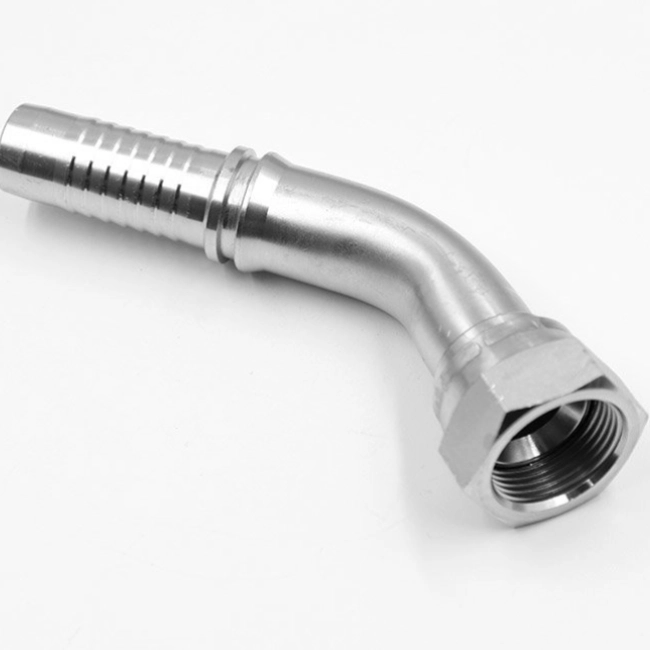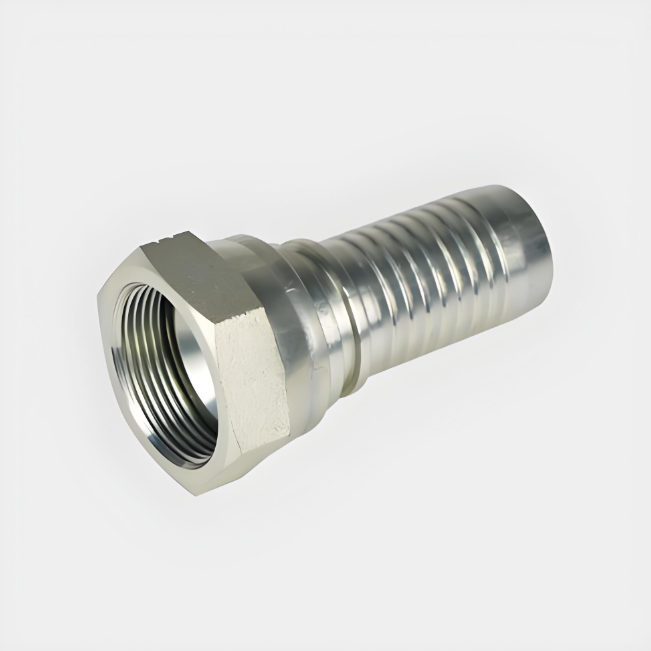Joints and fittings in hydraulic systems are critical components to ensure system tightness and reliability, and the JIC (Joint Industry Council) and AN (ArmyNavy) standards are two widely used standards that often confuse engineers, maintenance personnel, and even purchasers. This article will provide a one-stop solution from the standard meaning, technical comparison, compatibility, selection basis, etc..
Meaning of JIC Fittings standard (SAE J514):

Origin: developed by the American Society of Automotive Engineers (SAE) industrial general standards, widely used in construction machinery, agricultural equipment and other civilian areas.
37° Flare Seal: Fittings and fittings are sealed by 37° taper compression without additional sealing ring.
Thread standard: Adopting inch uniform thread (UN/UNF), such as 1/4” 20 UNF.
Pressure Rating: Typically withstands 3000~5000 psi (approx. 20~34 MPa), suitable for medium to high pressure systems.
AN Fittings Standard Meaning (MILSPEC Derived):
Origin: Derived from the World War II U.S. Army standard (MILA5515), now a common specification for the aviation and motorsports industries.
37° Flare Seal: Same angle as JIC, but with tighter tolerances (±0.5° vs. ±1° for JIC).
Thread standard: Dash numbering (e.g. AN4, AN6), corresponding to the pipe diameter (AN4=1/4 inch).
Pressure ratings: up to 6000~8000 psi (approx. 41~55 MPa), with some aerospace grade fittings exceeding 10,000 psi.
AN fittings video detail
JIC VS AN Fittings type and size comparison table:
| AN Fittings Size | Hose Inner diameter/ Tube Outer Diameter | SAE J514 37° Flare (also known as JIC Fittings) |
-02 | 1/8 in. | 5/16 in.-24 |
-03 | 3/16 in. | 3/8 in.-24 |
-04 | 1/4 in. | 7/16 in.-20 |
| -5 | 5/16 in. | 1/2 in.-20 |
| -6 | 3/8 in. | 9/16 in.-18 |
| -8 | 1/2 in. | 3/4 in.-16 |
| -10 | 5/8 in. | 7/8 in.-14 |
| -12 | 3/4 in. | 11/16 in.-12 |
| -16 | 1 in. | 15/16 in.-12 |
| -20 | 11/4 in. | 15/8 in.-12 |
| -24 | 11/2 in. | 17/8 in.-12 |
| -28 | 13/4 in. | 21/4 in.-12 |
| -32 | 2 in. | 21/2 in.-12 |
JIC VS AN Fittings Technology Comparison and Compatibility:
Performance Differences Sealability:
AN is more reliable in high-frequency vibration environments (e.g., aero-engines) due to tighter tolerances.
JIC performs close to AN in static systems, but may leak slightly after prolonged vibration.
Pressure resistance:
AN fittings typically have a 15% to 20% increase in wall thickness and higher material strength than JIC.
Key statistic: AN8 fittings last more than twice as long as JIC at 8,000 psi.
Compatibility Pitfalls
Same angle ≠ direct replacement:
Although JIC and AN are both 37 degree tapers, the thread sizes are different (e.g. JIC 3/8” ≠ AN6).
Consequences of incorrect mixing: minor leaks, major thread slippage leading to system collapse.
Conversion program:
Use an adapter (e.g. JIC female to AN male), but it increases the complexity of the system.
Alternative: Mix only for emergency repairs and thoroughly check sealing surfaces for wear.
JIC VS AN Fittings selection logic :
Prioritize AN selection scenarios:
Extreme pressure (> 5000 psi) or high-frequency vibration (racing, aviation hydraulic systems).
Need to lightweight (aluminum AN fittings than steel JIC 40% lighter).
Priority JIC selection of the scene:
Cost-sensitive projects (JIC price is usually 50% to 70% of AN).
Non-critical industrial equipment (such as forklifts, injection molding machine hydraulic lines).
JIC VS AN Fittings industry application cases:
Aviation hydraulic system: AN standard monopolizes more than 90% of the market, due to material traceability and fatigue resistance requirements.
Agricultural machinery: JIC occupies the mainstream, due to mud, corrosive environments require frequent replacement, low-cost and more economical.
JIC VS AN Fittings Installation Method:
- Clean sealing surface: Wipe with a lint-free cloth soaked in hydraulic oil to avoid particles scratching the taper surface.
- Manual Pre-tensioning: Rotate the fitting to a hand-tight condition to ensure that the threads are not misclamped.
- Torque lock:
JIC: 1/2” 20 UNF recommended torque 35~40 N-m.
AN6: Use 45~50 N-m (refer to SAE ARP1612). - Marking Inspection: Mark the line with a marker pen and observe periodically for looseness.
JIC VS AN Fittings Frequently Asked Questions and Solutions:
JIC and AN Fittings look almost the same, can they be mixed?
Core Differences:
Different thread specifications: JIC uses inch UN/UNF threads (e.g. 1/4“-20 UNF), AN uses Dash numbers (e.g. AN-4 corresponds to 1/4”).
Tolerance requirements: AN has a tighter 37° taper tolerance (±0.5° vs. ±1° for JIC).
Consequences of mixing:
Thread mismatch leads to difficult installation or slippage.
Sealing face angle deviation triggers high pressure leakage.
Contingency Program:
Temporary use in low-pressure systems only (<1000 psi), with close monitoring for leaks.
Long-term solution: Use adapter (e.g. Parker 3220 series).
Why are newly installed JIC Fittings still leaking?
Possible causes:
- Scratches or dirt on the seal taper (90% source of leakage). 2.
- Not tightened to standard torque (JIC 1/2″-20 UNF requires 35-40 N-m). 3.
- Incompatibility between fitting and line material (e.g. steel fitting with aluminum line, difference in coefficient of thermal expansion).
Solution steps: - Clean the sealing surface: wipe it with a lint-free cloth + hydraulic oil.
- Check the taper surface: Use 37° angle gauge to check, deviation > 0.5° need to be replaced.
- Tighten to torque: Recommend using a digital torque wrench (e.g. Norbar 15-100 N-m).
AN Fittings loosen in vibration environment, how to solve?
Root cause: AN is designed for high frequency vibration but can still fail if not installed correctly.
Anti-loosening solution:
Use a locknut: e.g. MS21042 lockwasher.
Apply thread adhesive: Loctite 577 (hydraulic fluid resistant formula).
Regular retightening: check every 50 working hours.
The existing system is JIC, can it be gradually replaced with AN?
It is feasible, but needs to meet:
Avoid mixing (try to standardize on the same line).
Replacement of the need to re-test the system sealing (recommended to do 2 times the pressure holding pressure test) AN Fittings are expensive, can they be replaced by JIC?
Prohibited scenes:
Aviation, racing, military equipment (AN is a mandatory standard).
High pressure (>5000 psi) or high frequency vibration environment.
Alternative Scenarios:
Low pressure industrial equipment (e.g., hydraulic lines for farm machinery).
Temporary repairs requiring downsizing (pressure ≤ 70% of original system).
JIC vs AN Article Conclusion :
The choice between JIC vs AN is essentially a balancing act between performance, cost and the needs of the scenario. Remember: aviation / racing must choose AN, industrial equipment preferred JIC, mixed use must be careful.
Bookmark this article, the next time you face the hydraulic joint selection, you will have a clear decision-making direction.





